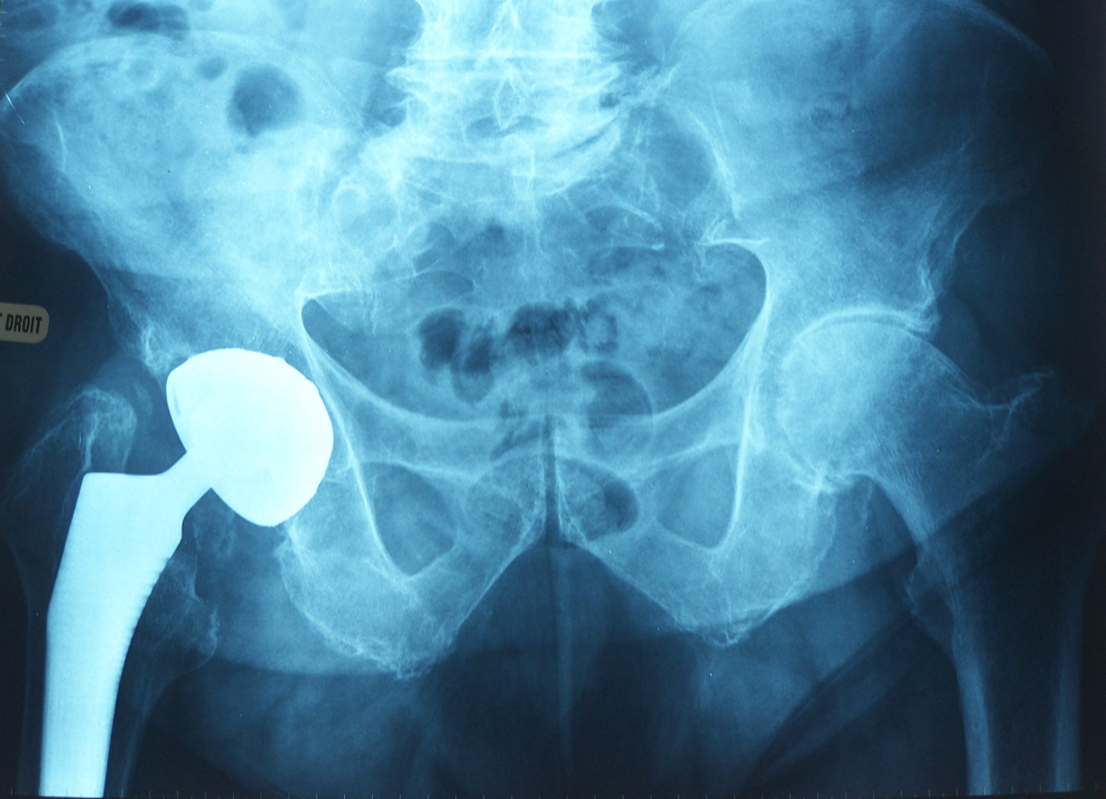Polarstem
The main cause of our failures with the dual mobility cup could be explained by the femoral stem’s poor design. After the invention of the Polarcup, we created the Polarstem in 2002—a self-locking, cement-less, straight stem with a double-coating of titanium and hydroxyapatite.

Their fixation capacity further improved and the hip’s offset was corrected. These new stems also facilitated direct anterior approach, minimally invasive surgeries, and the installation of the implant in a narrow femoral diaphysis with a thick cortical bone.
These stems were a synthesis of the following designs:
The Corail’s fully-coated straight stem and Muller’s self-locking stem.
What were the main challenges?
One of our biggest challenge with this stem design was the offset. As you can see here, medialization is important.
Another problem was the need to widen narrow diaphysis in order for the stem to be fully seated.

We also observed radiolucent lines on the greater trochanter, perhaps an indirect sign of stress shielding.

Stress shielding is rare but not exceptional, as shown here with a Corail stem on a femur’s narrow diaphysis which had to be widened.


These challenges made us rethink the design
The standard Polarstem is 4mm more lateralized than the Corail stem

The neck-shaft angle and the offset ratio were modified . The stem body however remained unchanged.

We can now adapt the Polarstem to all cases with these three versions. It‘s also an interesting alternative for those who use navigation and are looking for millimeter accuracy.

We have increased the capacity of Muller’s primary self-locking fixation.
The proximal part was widened to avoid a distal locking (about 1 mm).
Triple Taper


The stem is streamlined to avoid any conflict with the cup or the bone. The rounded, polished neck optimizes the dual mobility cup.

The distal part is now thinner and shorter, making it well-adapted to the morphology of young patients, even with thick cortical bones and curved femoral shafts. The stem allows for a Direct Anterior Approach (DAA), a minimally invasive surgery.

The HA coating immediately provides primary fixation and the titanium layer has better porosity for the secondary anchorage.



